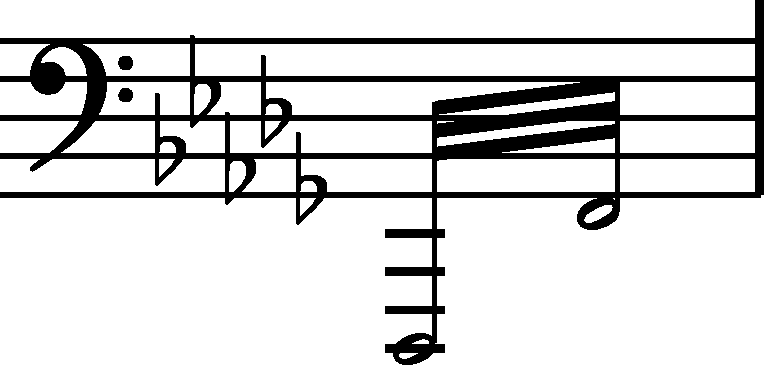



|
b. 258
|
composition: Op. 11, Concerto in E minor, Mvt III
..
FE is missing naturals lowering c category imprint: Interpretations within context; Differences between sources issues: EE revisions , Inaccuracies in FE , GE revisions |
|||||||||||
|
b. 258
|
composition: Op. 22, Polonaise
..
In the main text we omit the category imprint: Differences between sources; Editorial revisions issues: EE revisions , Cautionary accidentals |
|||||||||||
|
b. 258-260
|
composition: Op. 44, Polonaise in F♯ minor
..
In FE b. 260 opens a new line, in which the slur from the preceding bars is not continued, although its ending in b. 259 clearly indicates that it should be continued. It is difficult to say whether this inaccuracy was related to the fact that EE omitted the slur. In the main text we give the slur of GE, which is certainly correct. category imprint: Graphic ambiguousness; Differences between sources issues: Inaccuracies in FE , Errors in EE , Uncertain slur continuation |
|||||||||||
|
b. 258
|
composition: Op. 2, Variations, complete
..
The minim tremolo was added – certainly by Chopin – in the stage of proofreading FE1. We replace the "tim" abbreviation used there with the contemporary "Timp." The musical notation is of a conventional nature – Chopin must have meant an octave tremolando category imprint: Differences between sources issues: Authentic corrections of FE |
|||||||||||
|
b. 258-259
|
composition: Op. 49, Fantaisie in F minor
..
As in bars 254-255, cresc. - - was most probably added to A after [FC] had been finished. As there, in GE it was reproduced inaccurately, particularly the dashes marking its range. EE repeated the indication – in a reduced form – after GE1. category imprint: Differences between sources issues: EE revisions , Inaccuracies in GE |

 2(3) to c2(3) at the end of the 1st half of the bar. The accidentals were added in
2(3) to c2(3) at the end of the 1st half of the bar. The accidentals were added in  before f
before f
 . This is not an accurate reproduction of the timpani part either, since in the timpani the tremolo lasts only a crotchet and ends with a single note on the 4th beat of the bar (quaver and rest). The remaining sources of the piano part contain here only the solo voice rest. See also bar 260. The described addition was also introduced by
. This is not an accurate reproduction of the timpani part either, since in the timpani the tremolo lasts only a crotchet and ends with a single note on the 4th beat of the bar (quaver and rest). The remaining sources of the piano part contain here only the solo voice rest. See also bar 260. The described addition was also introduced by 